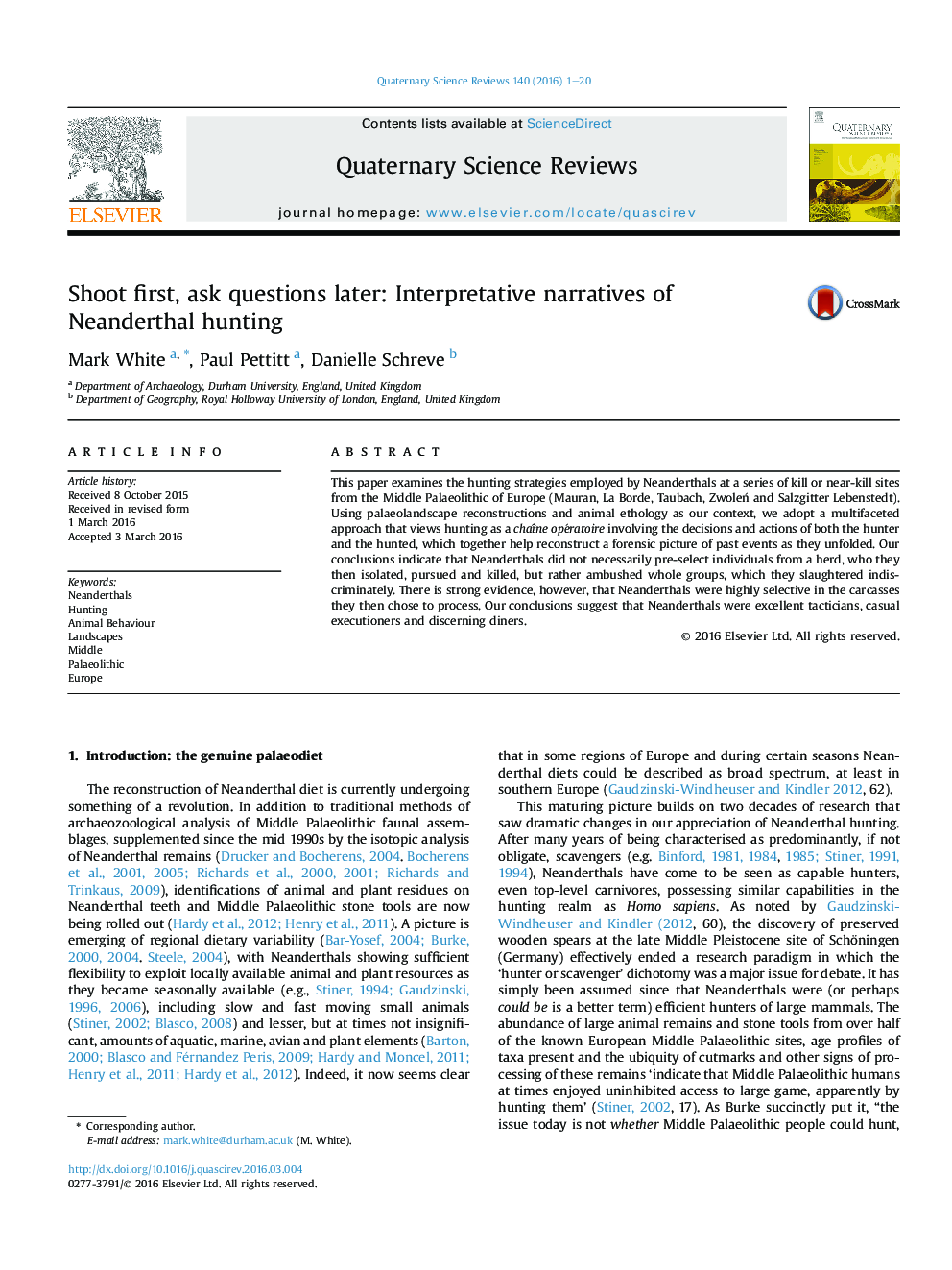| Article ID | Journal | Published Year | Pages | File Type |
|---|---|---|---|---|
| 6445458 | Quaternary Science Reviews | 2016 | 20 Pages |
Abstract
This paper examines the hunting strategies employed by Neanderthals at a series of kill or near-kill sites from the Middle Palaeolithic of Europe (Mauran, La Borde, Taubach, ZwoleÅ and Salzgitter Lebenstedt). Using palaeolandscape reconstructions and animal ethology as our context, we adopt a multifaceted approach that views hunting as a chaîne opératoire involving the decisions and actions of both the hunter and the hunted, which together help reconstruct a forensic picture of past events as they unfolded. Our conclusions indicate that Neanderthals did not necessarily pre-select individuals from a herd, who they then isolated, pursued and killed, but rather ambushed whole groups, which they slaughtered indiscriminately. There is strong evidence, however, that Neanderthals were highly selective in the carcasses they then chose to process. Our conclusions suggest that Neanderthals were excellent tacticians, casual executioners and discerning diners.
Related Topics
Physical Sciences and Engineering
Earth and Planetary Sciences
Geology
Authors
Mark White, Paul Pettitt, Danielle Schreve,
